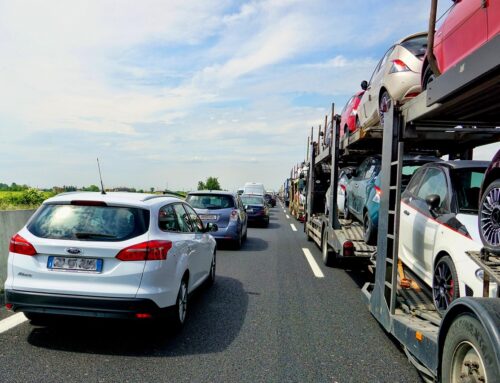So, we bought more electric vehicles last month (March 2022) than we did in the whole of 2019. That means there are even more electric vehicles on Britain’s roads and, as the percentage of electric vehicle (EV) owners increases, as do the five main risks of electric vehicle fires.
What are the five main risks that an electric vehicle fire may pose?
Electric vehicle fires are still relatively rare, but we know from speaking with various fire brigades that they do happen, and the number will only rise as we switch from traditional petrol and diesel engine cars. We also know that when an EV fire occurs the dangers are numerous, not only to humans but also to wildlife and the environment.
- Hot, hot, hot. In comparison to their conventional counterparts, EV car fires can reach temperatures in excess of 1,200°C. In a recent test we conducted on our Prosol UK Electric Vehicle Fire blanket, the car achieved temperatures of more than 650°C in less than 90 seconds.
- Blame the battery. Electric vehicles are powered by a lithium-ion battery pack. It is well-documented that most EV fires start in the battery and are a result of either a fault or localised damage, possibly following an accident. Most battery packs can be found underneath the car which means they’re not easy to get at which isn’t ideal if one catches fire!
- Danger, danger, high voltage! Attending an electric vehicle fire poses a substantial shock hazard for any emergency personnel. An EV can have a voltage of up to 650 Volts DC compared to 12/24 Volts direct current (DC) in a petrol or diesel car. This high voltage puts anyone tackling a blazing electric vehicle at risk of receiving an electric shock that could cause serious or fatal injury.
- Chemical cocktail. When an electric vehicle burns it generates more than 100 organic chemicals, many of which are extremely hazardous and have the potential to be fatal to humans and animals. These include hydrogen cyanide, carbon monoxide, hydrochloric acid and hydrogen fluoride.
- Re-ignited. Electric vehicle fires are very difficult to put out and many manufacturers suggest that if an EV does catch fire, it is left to burn in a controlled manner by the fire brigade. Unfortunately, once the fire is either extinguished or burnt out the chances of the vehicle re-igniting are high. And this can happen hours, days or sometimes weeks following the original fire.

























